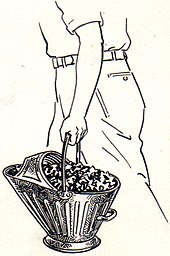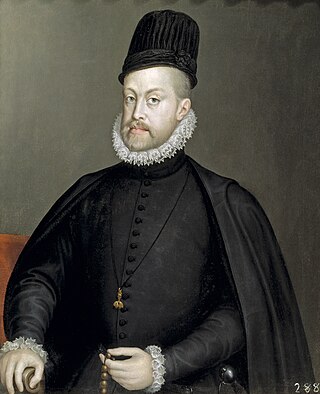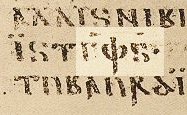

A coal scuttle, sometimes spelled coalscuttle and also called a hod, "coal bucket", or "coal pail", is a bucket-like container for holding a small, intermediate supply of coal convenient to an indoor coal-fired stove or heater.


A coal scuttle, sometimes spelled coalscuttle and also called a hod, "coal bucket", or "coal pail", is a bucket-like container for holding a small, intermediate supply of coal convenient to an indoor coal-fired stove or heater.

Coal scuttles are usually made of metal and shaped as a vertical cylinder or truncated cone, with the open top slanted for pouring coal on a fire. It may have one or two handles. [1] Homes that do not use coal sometimes use a coal scuttle decoratively. [2]
The word scuttle comes, via Middle English and Old English, from the Latin word scutulla, meaning "serving platter". [3] An alternative name, hod, derives from the Old French hotte, meaning "'basket to carry on the back', apparently from Frankish *hotta or some other Germanic source (compare Middle High German hotze 'cradle')", and is also used in reference to boxes used to carry bricks or other construction materials. [4]
In 1917, the Swedish serial killer Hilda Nilsson used a coal scuttle, a large bucket, and a washboard to drown children that she had been hired to care for. [5]
The infamous German Stahlhelm, or Steel Helmet, is sometimes referred to in English-language publications as the "Coal Scuttle" helmet, due to its shape resembling that of a coal scuttle.

A wharf, quay, staith, or staithe is a structure on the shore of a harbour or on the bank of a river or canal where ships may dock to load and unload cargo or passengers. Such a structure includes one or more berths, and may also include piers, warehouses, or other facilities necessary for handling the ships. Wharves are often considered to be a series of docks at which boats are stationed.
An idiom is a phrase or expression that typically presents a figurative, non-literal meaning attached to the phrase; but some phrases become figurative idioms while retaining the literal meaning of the phrase. Categorized as formulaic language, an idiom's figurative meaning is different from the literal meaning. Idioms occur frequently in all languages; in English alone there are an estimated twenty-five million idiomatic expressions.

A lantern is an often portable source of lighting, typically featuring a protective enclosure for the light source – historically usually a candle or a wick in oil, and often a battery-powered light in modern times – to make it easier to carry and hang up, and make it more reliable outdoors or in drafty interiors. Lanterns may also be used for signaling, as torches, or as general light-sources outdoors.

A toque is a type of hat with a narrow brim or no brim at all.

A bucket is typically a watertight, vertical cylinder or truncated cone or square, with an open top and a flat bottom, attached to a semicircular carrying handle called the bail.

The belfry is a structure enclosing bells for ringing as part of a building, usually as part of a bell tower or steeple. It can also refer to the entire tower or building, particularly in continental Europe for such a tower attached to a city hall or other civic building.

A hood is a kind of headgear that covers most of the head and neck, and sometimes the face. Hoods that cover mainly the sides and top of the head, and leave the face mostly or partly open may be worn for protection from the environment, for fashion, as a form of traditional dress or uniform, or in the case of knights, an armoured hood is used for protection against bladed weapons. In some cases, hoods are used to prevent the wearer from seeing where they are going. Hoods with eye holes may be used for religious purposes to prevent the wearer from being seen. In the case of Ku Klux Klan members, terrorists, or criminals such as robbers, a hood with eye holes helps prevent identification.
Firedamp is any flammable gas found in coal mines, typically coalbed methane. It is particularly found in areas where the coal is bituminous. The gas accumulates in pockets in the coal and adjacent strata and when they are penetrated the release can trigger explosions. Historically, if such a pocket was highly pressurized, it was termed a "bag of foulness".

A groom or stable boy is a person who is responsible for some or all aspects of the management of horses and/or the care of the stables themselves. The term most often refers to a person who is the employee of a stable owner, but an owner of a horse may perform the duties of a groom, particularly if the owner only possesses a few horses.
Folk etymology is a change in a word or phrase resulting from the replacement of an unfamiliar form by a more familiar one. The form or the meaning of an archaic, foreign, or otherwise unfamiliar word is reinterpreted as resembling more familiar words or morphemes.
Afterdamp is the toxic mixture of gases left in a mine following an explosion caused by methane-rich firedamp, which itself can initiate a much larger explosion of coal dust. The term is etymologically and practically related to other terms for underground mine gases—such as firedamp, white damp, and black damp, with afterdamp being composed, rather, primarily by carbon dioxide, carbon monoxide and nitrogen, with highly toxic stinkdamp-constituent hydrogen sulfide possibly also present. However, the high content of carbon monoxide is the component that kills, preferentially combining with haemoglobin in the blood and thus depriving victims of oxygen. Globally, afterdamp has caused many of the casualties in disasters of pit coalfields, including British, such as the Senghenydd colliery disaster. Such disasters continue to afflict working mines, for instance in mainland China.

An andiron or firedog, fire-dog or fire dog is a bracket support, normally found in pairs, on which logs are laid for burning in an open fireplace, so that air may circulate under the firewood, allowing better burning and less smoke. They generally consist of a tall vertical element at the front, with at least two legs. This stops the logs from rolling out into the room, and may be highly decorative. The other element is one or more low horizontal pieces stretching back and serving to hold the logs off the bottom of the fireplace. An andiron is sometimes called a dog or dog-iron.
A bogle, boggle, or bogill is a Northumbrian and Scots term for a ghost or folkloric being, used for a variety of related folkloric creatures including Shellycoats, Barghests, Brags, the Hedley Kow and even giants such as those associated with Cobb's Causeway. They are reputed to live for the simple purpose of perplexing mankind, rather than seriously harming or serving them.
Whitedamp is a noxious mixture of gases formed by the combustion of coal, usually in an enclosed environment such as a coal mine. The main, most toxic constituent is carbon monoxide, which causes carbon monoxide poisoning. Hydrogen sulfide, also called stinkdamp, may co-occur. Coal frequently starts to burn slowly in mines when it is exposed to the atmosphere; partial combustion produces carbon monoxide. The term is etymologically and practically related to terms for other underground mine gases such as firedamp, black damp, stink damp, and afterdamp.

The English word god comes from the Old English god, which itself is derived from the Proto-Germanic *ǥuđán. Its cognates in other Germanic languages include guþ, gudis, guð, god, and got.
The term man and words derived from it can designate any or even all of the human race regardless of their sex or age. In traditional usage, man itself refers to the species or to humanity (mankind) as a whole.
In Modern English, I is the singular, first-person pronoun.

The word witch derives from the Old English nouns wiċċa[ˈwit.t͡ʃɑ] and wiċċe[ˈwit.t͡ʃe]. The word's further origins in Proto-Germanic and Proto-Indo-European are unclear.